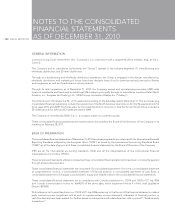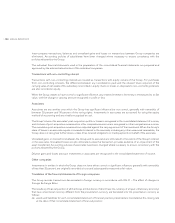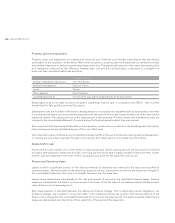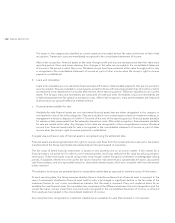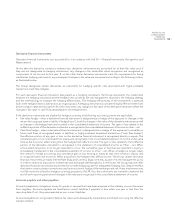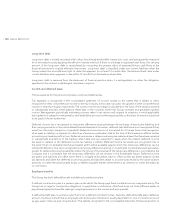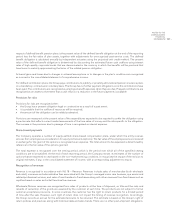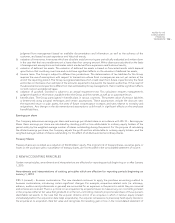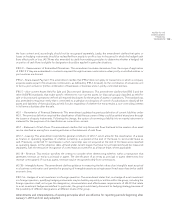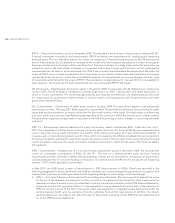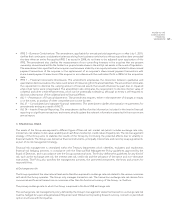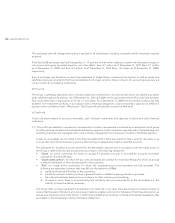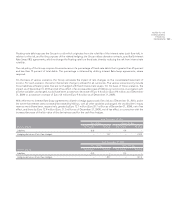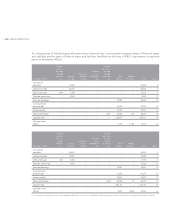LensCrafters 2010 Annual Report Download - page 134
Download and view the complete annual report
Please find page 134 of the 2010 LensCrafters annual report below. You can navigate through the pages in the report by either clicking on the pages listed below, or by using the keyword search tool below to find specific information within the annual report.ANNUAL REPORT 2010> 132 |
Revenues received for the shipping and handling of goods are included in sales and the costs associated with shipments
to customers are included in operating expenses.
Retail Division revenues are recognized upon receipt by the customer at the retail location or, for internet and catalogue sales,
when goods are shipped to the customer. In some countries, the Group allows retail customers to return goods for a period
of time and, as such, the Group records an accrual for the estimated amounts to be returned. This accrual is based on the
historical return rate as a percentage of net sales and the timing of the returns from the original transaction date. There are no
other post–shipment obligations. Additionally, the Retail Division enters into discount programs and similar relationships with
third parties that have terms of twelve or more months. Revenues under these arrangements are recognized upon receipt of the
products or services by the customer at the retail location. For internet and catalogue sales, advance payments and deposits
from customers are not recorded as revenues until the product is delivered. The Retail Division also includes managed vision
care revenues consisting of both fixed fee and fee–for–service managed vision care plans. For fixed–fee–plans, the plan sponsor
pays the Group a monthly premium for each enrolled subscriber. Premium revenue is recognized as earned during the benefit
coverage period. Premiums are generally billed in the month of benefit coverage. Any unearned premium revenue is deferred
and recorded within accrued liabilities on the consolidated statement of financial position. For fee for service plans, the plan
sponsor pays the Company a fee to process its claims. Revenue is recognized as the services are rendered. This revenue is
presented as third party administrative services revenue. For these programs, the plan sponsor is responsible for funding the
cost of claims. Accruals are established for amounts due under these relationships estimated to be uncollectibile.
Franchise revenues based on sales by franchisees (such as royalties) are accrued and recognized as earned. Initial
franchise fees are recorded as revenue when all material services or conditions relating to the sale of the franchise have
been substantially performed or satisfied by the Group and when the related store begins operations. Allowances are
established for amounts due under these relationships when they are determined to be uncollectible.
The Group licenses to third parties the rights to certain intellectual property and other proprietary information and
recognizes royalty revenues when earned.
The Wholesale and Retail Divisions may offer certain promotions during the year. Free frames given to customers as part
of a promotional offer are recorded in cost of sales at the time they are delivered to the customer. Discounts and coupons
tendered by customers are recorded as a reduction of revenue at the date of sale.
Use of accounting estimates
The preparation of financial statements in conformity with IFRS requires the use of certain critical accounting estimates and
assumptions which influence the value of assets and liabilities as well as revenues and costs reported in the consolidated
statement of financial position and in the consolidated statement of income, respectively or the disclosures included in
the notes to the consolidated financial statements in relation to potential assets and liabilities existing as of the date the
consolidated financial statements were authorized for issuance.
Estimates are based on historical experience and other factors. The resulting accounting estimates could differ from the
related actual results. Estimates are periodically reviewed and the effects of each change are reflected in the consolidated
statement of income in the period in which the change occurs.
The current economic and financial crisis has resulted in the need to make assumptions on future trends that are
characterized by a significant degree of uncertainty and, therefore, the actual results in future years may significantly differ
from the estimate.
The most significant accounting principles which require a higher degree of judgment from management are illustrated
below.
Valuation of receivables. Receivables from customers are adjusted by the related allowance for doubtful accounts a)
in order to take into account their recoverable amount. The determination of the amount of write–downs requires


